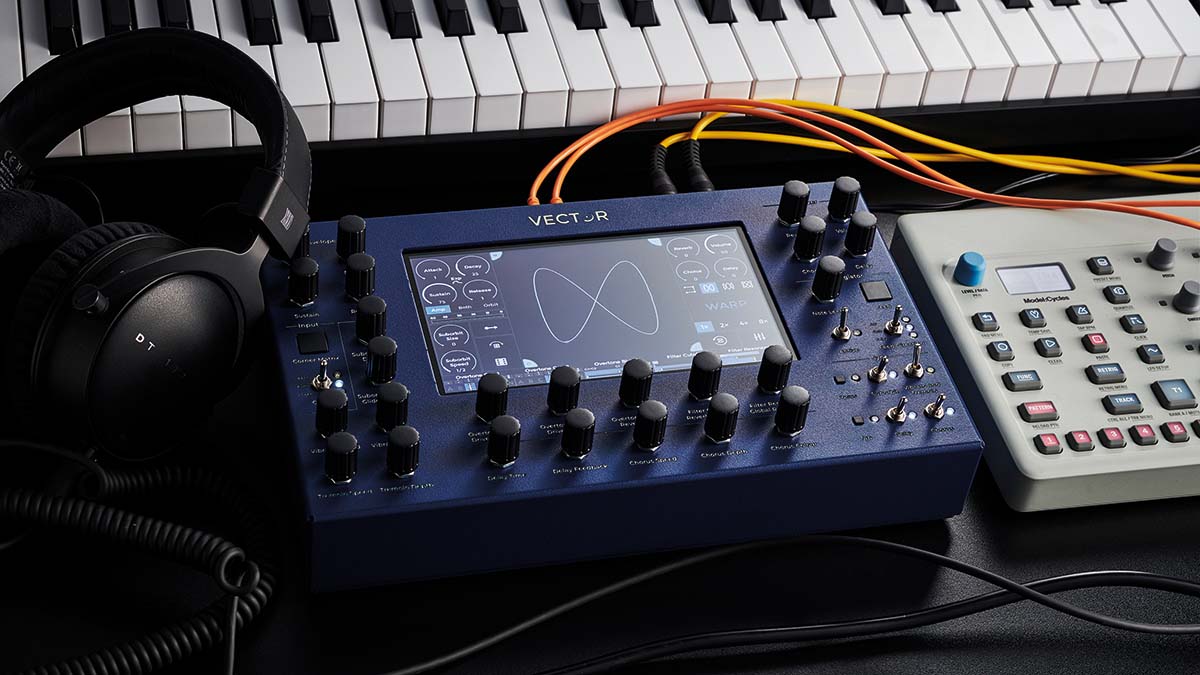MusicRadar Verdict
A unique voice and experimental workflow; if you like crystalline clean tones and huge stereo effects then this is for you.
Pros
- +
Uniquely voiced and powerful synth engine.
- +
Excellent build quality.
- +
Good range of connectivity.
Cons
- -
No keyboard.
- -
Not all on screen controls are touch-enabled.
MusicRadar's got your back
What is it?
We’ve seen a lot of synths in our time, however, few offer anything truly unique, which is why the arrival of the Vector synth has got me amped up. It is truly a unique piece of gear that not only offers a different way of interfacing with sound but the sound itself is new and exciting. So what is this Vector synth then?
The synth itself is a fairly unassuming blue box, made of strong folded metal. A number of good, firm toggle switches and encoders adorn the top surface, with I/O round the back as expected. Here we have power, midi in and out (via trs adapters), ethernet and quarter-inch outputs.
The real highlight of this device however is the seven-inch capacitive touch screen. It’s clear and bright. Not OLED bright but certainly enough for a well-lit studio and the design offers enough contrast to make settings easy to absorb.

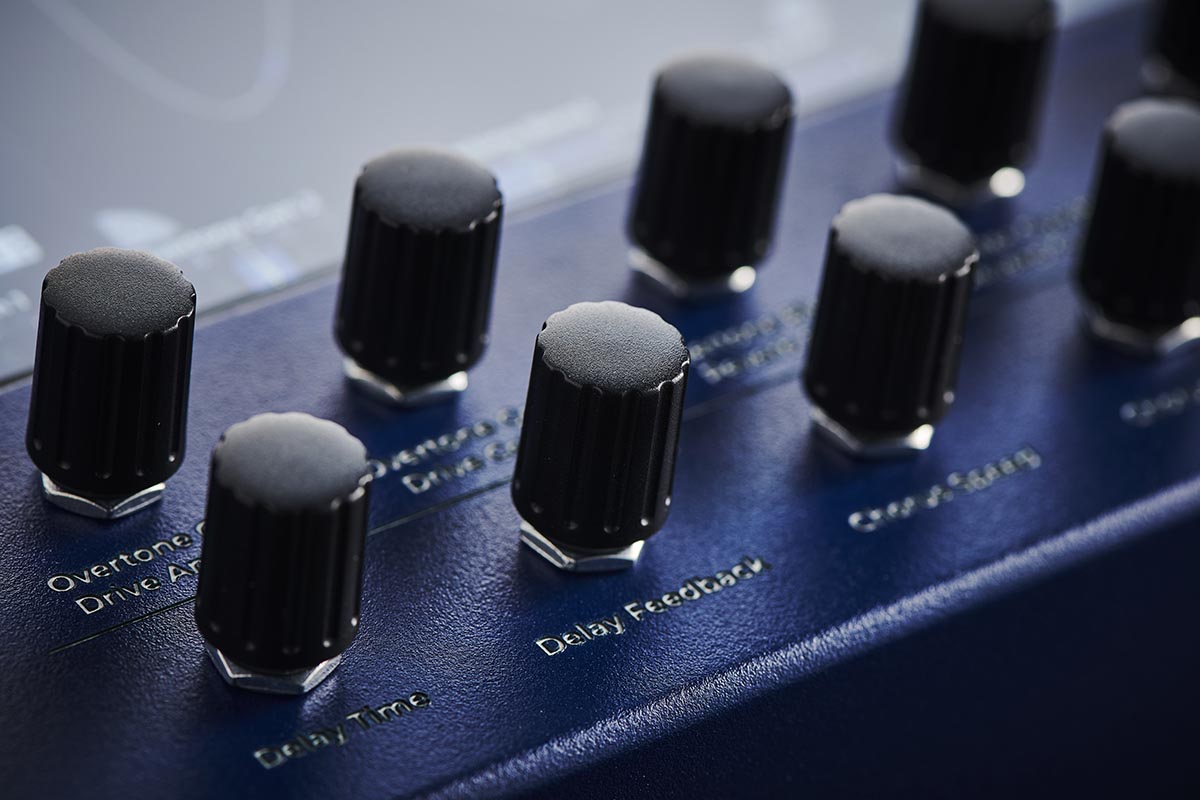

When it comes to the output of the Vector Synth, the tones it produces are quite unique. They are reminiscent of D50 or DX7-style FM sounds, in that they do the glassy and airy sounds wonderfully but come with the clarity and digital cool of more modern tools
As tech geeks, we love the touch screen but we're also a fan of tactile tools and instruments, so having the mix of onscreen controls paired with the knobs and sturdy metal toggle switches is really pleasing. The combination is well-thought-out as well and even when a physical button or knob has two functions navigating them is easy.
The nature of the synth means a screen-based approach is probably the only viable one, so other than a few icons that might feel alien at first, the menu system is pretty intuitive and, as much as we're not fans of pages of menu diving, the sections are really clearly defined here. It takes around an hour or so to get accustomed to where different functions live, with the main ones having knobs and switches anyway.
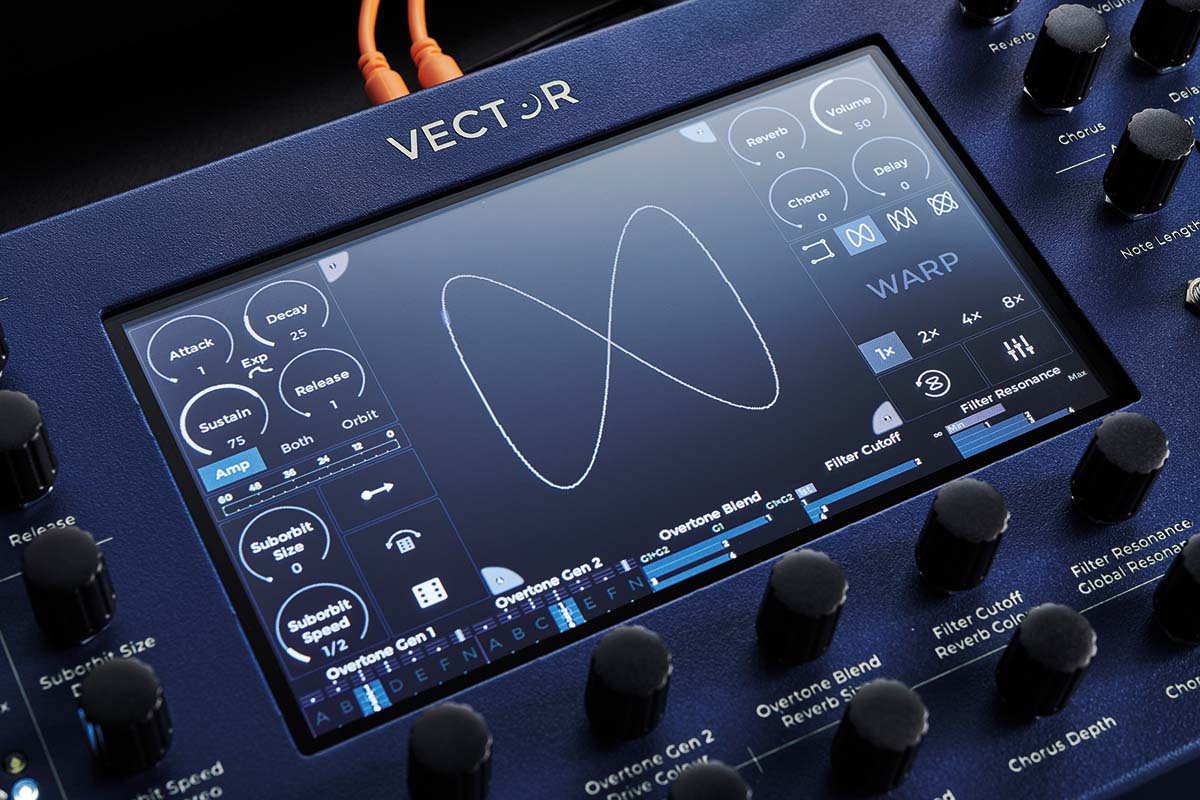
When it comes to the Vector’s main purpose, sound design, it takes a different approach to almost every other synth on the market and feels more akin to some soft synths out there, with its path based modulation and Linux/arm architecture.
The chorus is one of the heroes of this unit. Like the Junos, it adds mojo to the sound, with a lovely stereo placement. The delay is a simple one. Good-sounding but could be more versatile
Sound design is done via a few sections of the Vector synth. First, let’s talk about some of the global attributes. There’s a very lush reverb, that has elements of shimmer and a tail that can be extended for quite some time. The master reverb level is set by a physical knob in the mixer section, while the tonal characteristics are adjusted on the mixer page on the screen.
Want all the hottest music and gear news, reviews, deals, features and more, direct to your inbox? Sign up here.
The delay and chorus are laid out similarly. The chorus is one of the heroes of this unit. Like the Junos, it adds mojo to the sound, with a lovely stereo placement. The delay is a simple one. Good-sounding but could be more versatile. We'd like to see more by way of delay types to complement other parts of the synth.
There is also a tremolo and vibrato, however, their controls seem to be grouped with the syncing controls. That makes some kind of sense; however, grouping effects is a more logical choice. That’s the compromise of keeping things compact, we're guessing.
The synthesis engine
Each of the four corners on the vector plane consists of two overtone generators and a cross-modulating blend mechanism. The generators each synthesise harmonic series in six interlocking patterns and a harmonically weighted pink noise.
The sound is processed by the blend mechanism, which can be additive or modulated by three audio-rate modulation methods, including complex waveform phase modulation.
The signal generated is harmonically rich and this is where the subtractive part of the engine comes in. For each of the 16 voices, there are four filters, with a flexible routing matrix. These can be placed anywhere in the synthesis pipeline, including after each generator before the modulation phase. Finally, the Orbiter defines how the sounds generated by the four corners are mixed.
Performance and verdict
When it comes to voices, the Vector really shines. It can be run in 16-voice polyphonic mode, or mono, with an on screen slider to define the number of voices played. There’s a detune control, as well as a wonderful stereo spread, that randomly bounces notes across the stereo field.
Combined with the chorus, reverb and delay, you can easily create an evolving ambient patch that sounds both delicate and huge at once, especially when you start modulating overtones and mixing tone generators.
This leads us nicely on to the headline act. The main screen, in orbit view, shows a blue dot (the orbiter) following a looping path. This path brings the orbiter to varying degrees of proximity to each corner, which is home to a different overtone.
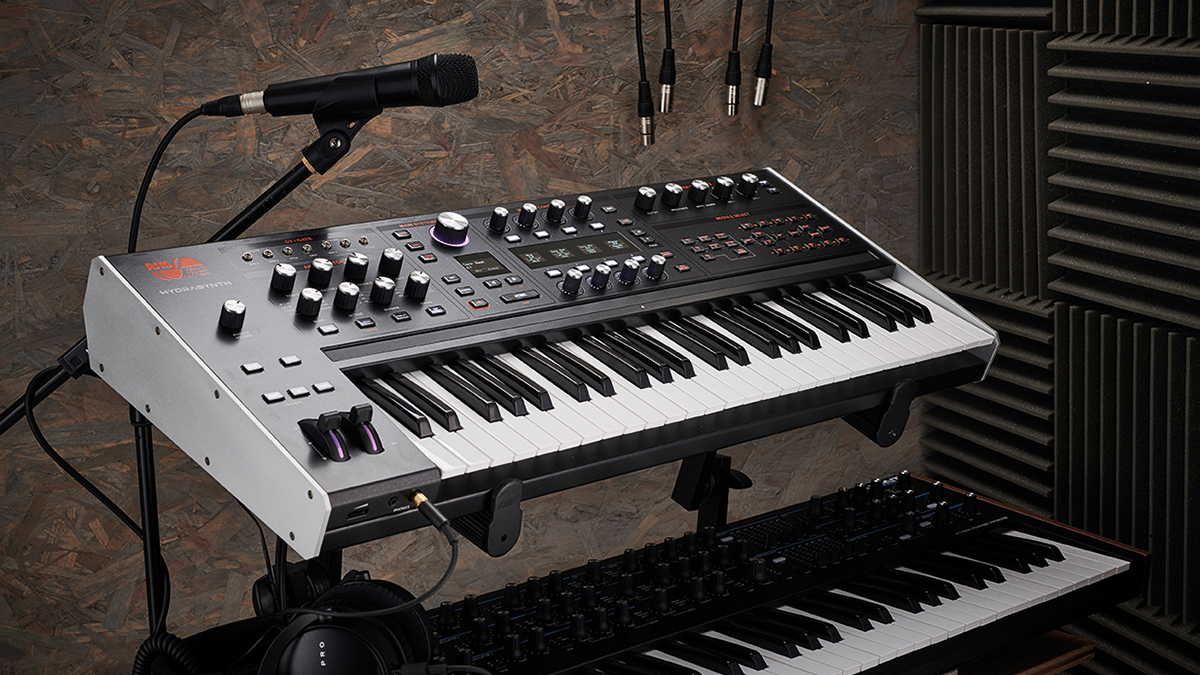
• ASM Hydrasynth
This offers a multitude of modulation and includes a fantastic ribbon controller, for natural, organic sounding interaction with your music.
• Arturia PolyBrute
The PolyBrute is a fantastically characterful, well-designed synth; a top-tier poly and a worthy flagship for the Brute range.
Now, there are global controls to affect things like resonance and filter cutoff but where the magic happens is when you hit the focus button to adjust each corner in turn. Here you can tweak your sounds, choosing from different tone generators, that range from soft, to glassy, to noisy and you get two of these for each corner, with a blend control to fine-tune.
The fun doesn’t stop there, as you can also add sub orbiters, with various sizes and speeds, which add a layer of extra complexity and movement to the sounds. Represented on the screen they certainly look like LFOS and have those characteristics too.
There are four paths that your orbiters can follow, including an ADSR. These go from the simple to the complex plus there’s an area of touchscreen where you can warp the path, adding further interest/motion.
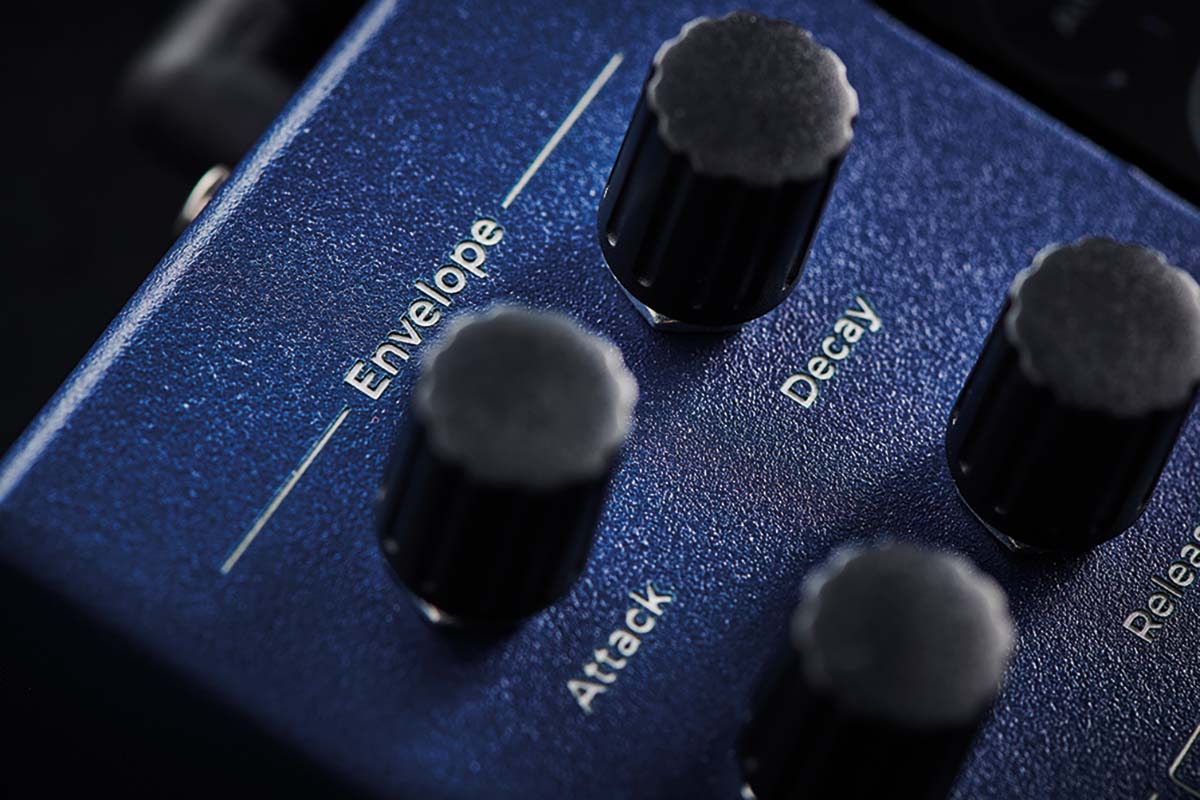
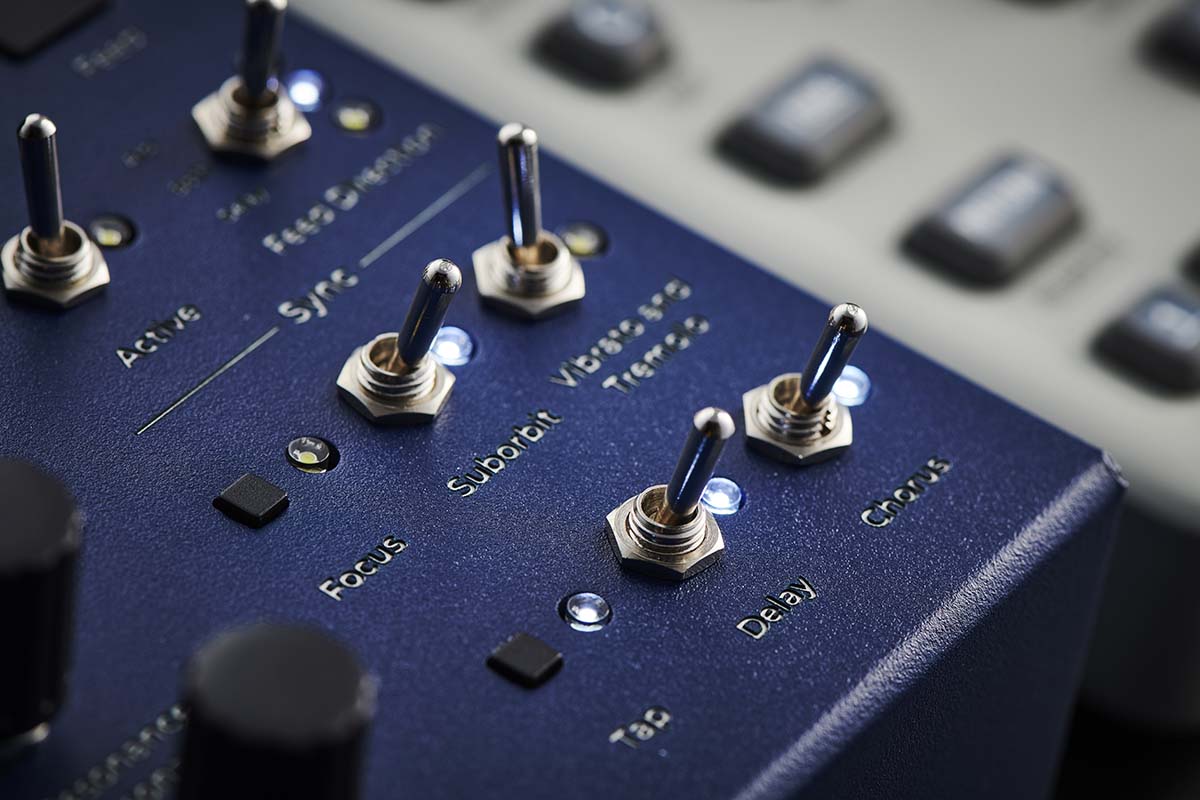
When it comes to the output of the Vector Synth, the tones it produces are quite unique. They are reminiscent of D50 or DX7-style FM sounds, in that they do the glassy and airy sounds wonderfully but come with the clarity and digital cool of more modern tools.
This, and how the Orbiters move, is why it has more in common with certain software tools than traditional synths and that’s a good thing. It does its own thing but remains hands-on.
If that was the end of the Vector’s capabilities it’d be worth its price but it goes on. There’s a fantastic arp and step sequencer built-in, with great humanising controls. There’s a random button for the overtone generators too and it produces new sounds based on adjustments to the four channels of tone generation, filter cutoff and resonance. This even has an undo button.

Lastly, there is the matrix, which is accessed via a top panel button and brings up a matrix interface where you define which tone generator passes through which multimode filter and the signal path. This area takes a little extra time to master but is worth it – some of the best sound design options are found there.
The nature of this instrument means that it can be updated via firmware, and although we found no bugs, if any appear they can be rectified, either by a USB or by ethernet connection.
MusicRadar verdict: A unique voice and experimental workflow; if you like crystalline clean tones and huge stereo effects then this is for you.
Hands-on demos
Red Means Recording
Synth Anatomy
Vector
Specifications
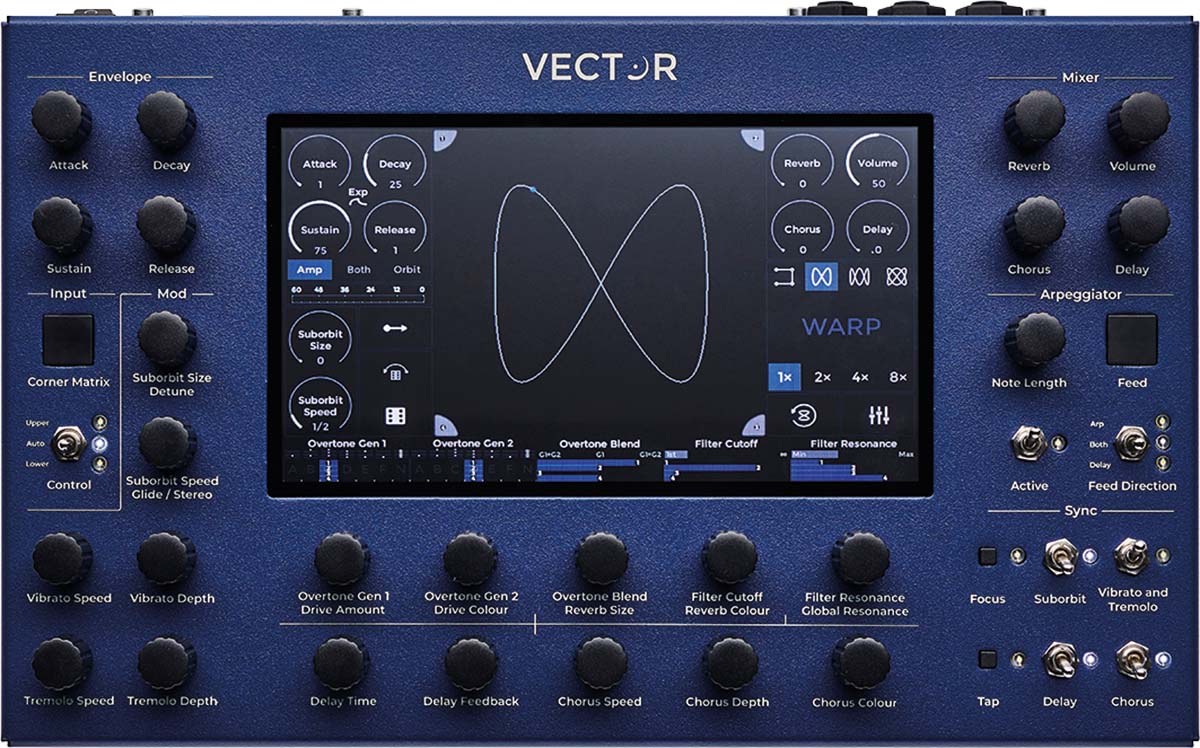
- TYPE: Exploratory hardware synth
- KEY FEATURES: Compact desktop form factor, Multiple voices of mono or polyphonic output, Hybrid synthesis, 7” touch screen
- CONTACT: Vector
